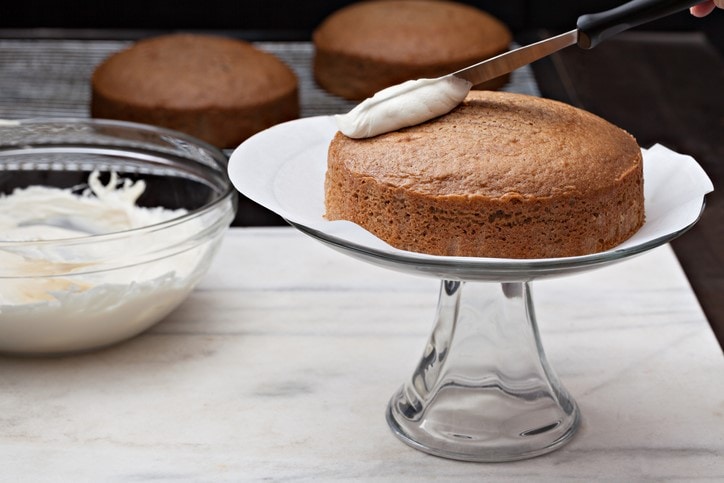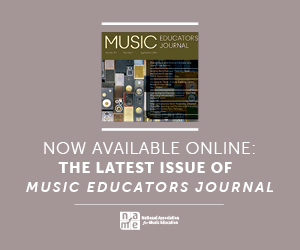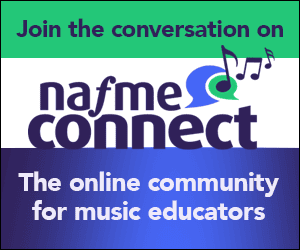/ News Posts / Get with the Program
Get with the Program
It Can Be the Icing on a Concert’s Cake
By NAfME Member Lori Schwartz Reichl
This article was originally published in the November 2017 teacher edition of In Tune Magazine.
“Everything is important – that success is in the details.”
~ Steve Jobs
The printed concert program is often a neglected detail in a director’s preparation for a performance. Recall the times you’ve attended a concert, reviewed the program, and discovered a grammatical error, misspelled word, formatting mistake, omitted performer, or poor printing quality. Programs should represent planning, display organizational effort, provide communication to the audience, and express pride. Is your concert program meeting these standards?

iStockphoto.com | Catalin Daniel Ciolca
It’s fairly common practice to include the titles of musical selections, movements to be performed, composers/arrangers, and names of the ensembles and their members within a program. However, have you given thought to any other possibilities that could be appealing, beneficial, or informative? Have you looked carefully at the programs produced by your colleagues or by those directors you admire most? Have you received feedback from your students, staff, administration, or community on previous program designs? Different types of performances may allow for different styles.
As concert season approaches, reflect on ways you can improve the creation, organization, and distribution of your programs. In addition to the concert’s musical components, consider adding all or a combination of the following:
- Program notes. These could include a brief biography of the composer, details of the work, historical and musical context of the work, a description of how the work will sound, an interpretation of the work given by the performer(s), and/or—if applicable—biographies for a guest conductor or soloist.
- Honoring of musical effort. Include the names of all accompanists, narrators, and soloists. If a choral selection features instrumentalists, or an instrumental selection features vocalists, include the names and instrumentation/voice parts of these performers.
- Praise for accomplishments. Have particular students been selected to countywide, state, regional, national, or international events? These accomplishments can be listed individually or by use of a symbol system. For example, an asterisk next to a performer’s name can denote that the student has been selected to perform in the all-state choral festival.
- A show of gratitude. Thank any person or organization who has supported the music program throughout the school year, such as administrators, staff, clinicians, colleagues of feeder programs, volunteers, etc. Spotlight patrons who have graciously donated equipment, expertise, money, or time.
- Upcoming events. List dates, times, and locations of future performances, fundraisers, trips, etc. Consider highlighting non-music events, too, to demonstrate the importance of educating the whole child.
- Volunteer or donation requests. Be gentle with your wording here. Information about the performance should be of greatest concern.
- Contact information. Include your full name, along with school or music office phone, fax, address, email, websites, and/or social media accounts.
Once you’ve reached a decision on what to include in the program and have begun actually creating your document, be sure to:
- Plan ahead. What’s your timeline for organizing the information in an attractive format? Have you given yourself enough time to review, photocopy, staple, fold, and insert additional items? What type of paper are you using? Are you printing in color or black and white? Have you secured helpers?
- Proofread. Do this after each draft. As you near the completion of the final draft, print out the document and check for formatting errors. Does the document appear symmetrical, especially when folded? Has any text or image been cut off? Employ a new set of eyes to review the content, grammar, formatting, etc. If suggestions or changes are made, reprint and check formatting errors each time.
- Obtain approval. Particularly if you’re a new teacher, be sure to show the document to your administrator before printing and photocopying. Ask him/her to review it, offer suggestions, and approve of all content. Allow ample time for this task. Do not expect a one-day turnaround.
If the programs are printed a few days in advance of the performance, consider passing some along to individual staff and placing others in visible areas throughout the school, such as the main office, cafeteria, bulletin board, staff restrooms, or staff lounge. This provides an eye-catching advertisement that the performance is approaching. At the concert itself, distribute the programs to the audience in a creative and attractive way. Have students, volunteers, or staff pass them out at the entrance doors to the performance venue, or set up tables with decorative baskets full of programs for audience members to retrieve themselves.
If you do accidentally omit a performer or patron’s name from the program, alert the audience with remorse. Apologize to this person (and his/her family if it’s a student), and provide him/her with an updated program that adds the missing information. This kind gesture will surely be appreciated; you may be amazed at how many students and families hold on to concert programs as souvenirs.
Keep extra programs on hand for a few days following the concert. Students and parents will often ask if there are any remaining. Retain an electronic version for your files and a printed version for your portfolio. And mail programs to any dedicated supporters who are known for their great past attendance but who, for whatever reason, were unable to attend this particular performance.
No detail is too small when planning a program. People love to see their name in print. Imagine how such a small deed can make them feel appreciated and inspire them to continue supporting your efforts. Don’t allow the program’s creation to be rushed or ignored. Take the time to create an aesthetically pleasing document. When photos or videos are lost or deleted, a printed program may be all that remains of a performance besides individual memories. At the very least, it gives the audience something to read when there’s a delay! The actual concert is the main attraction, of course, but a finely crafted program can be an additional benefit. Bake a great cake, then make the icing the sweetest.
NAfME has created two concert program inserts with music education advocacy ideas which can be included with your concert program. A Music In Our Schools Month® concert program insert is also available.
About the author:

Photo: Richard Twigg Photography
NAfME member Lori Schwartz Reichl is a music educator and author. Visit her at makingkeychanges.com.
Lori Schwartz Reichl actively serves as an adjudicator, clinician, conductor, private instructor, speaker, and writer. Lori is the author of the series “Key Changes: Refreshing Your Music Program” published monthly for In Tune Magazine’s teacher edition where she provides resources to enhance the music classroom and rehearsal space. She also serves as a journalist for Teaching Music Magazine. Lori has worked in rural, suburban, and urban public schools and is recognized for her work with Title I schools. As an avid presenter at conferences, professional development sessions, and universities nationwide, she serves as a resource for building community, developing effective classroom management techniques and rehearsal routines, and motivating diverse learners.
Did this blog spur new ideas for your music program? Share them on Amplify! Interested in reprinting this article? Please review the reprint guidelines.
The National Association for Music Education (NAfME) provides a number of forums for the sharing of information and opinion, including blogs and postings on our website, articles and columns in our magazines and journals, and postings to our Amplify member portal. Unless specifically noted, the views expressed in these media do not necessarily represent the policy or views of the Association, its officers, or its employees.
Catherina Hurlburt, Marketing Communications Manager. March 5, 2019. © National Association for Music Education (NAfME.org)
Published Date
March 5, 2019
Category
- Program Development
Copyright
March 5, 2019. © National Association for Music Education (NAfME.org)





